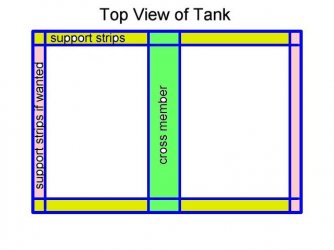Hi,
I am considering building a bigger fish tank for my Discus. Dimensions would be 36X24X60 (LXWXH in Inches.) roughly 225 gallons. I plan on using acrylic, as I hear it weighs less. I have worked out my tank weighing approx. 2,000 lbs give or take a few. This is with aprrox. 25 lbs of gravel. This is without the weight of the acrylic added. How much do you think the tank will weigh including the acrylic? I believe I would need to contact a contractor, as my tank is on the second flour of an apartment. Better to be safe then sorry right? Would you guys worry about weight?
Anything else I need to know? I will look up a little more on actually building the tank, but I have knowledge on applying the silicone and using clamps to keep it tight.
Thanks,
Connor
I am considering building a bigger fish tank for my Discus. Dimensions would be 36X24X60 (LXWXH in Inches.) roughly 225 gallons. I plan on using acrylic, as I hear it weighs less. I have worked out my tank weighing approx. 2,000 lbs give or take a few. This is with aprrox. 25 lbs of gravel. This is without the weight of the acrylic added. How much do you think the tank will weigh including the acrylic? I believe I would need to contact a contractor, as my tank is on the second flour of an apartment. Better to be safe then sorry right? Would you guys worry about weight?
Anything else I need to know? I will look up a little more on actually building the tank, but I have knowledge on applying the silicone and using clamps to keep it tight.
Thanks,
Connor


 /www.garf.org/tank/buildtank.asp
/www.garf.org/tank/buildtank.asp